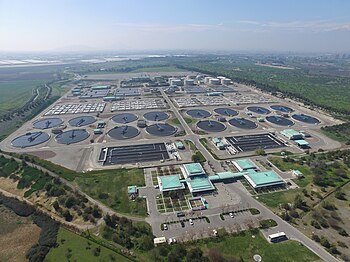|
Biofactories The name biofactory comes from the improvements which different installments of traditional health services (wastewater treatment and water treatment plants) have been through; this has been done by reassessing them into a Circular Economy (CE). The concept was first used by Chilean company Aguas Andinas’ CEO, Narcís Berberana. Yves Lesty, Carlos Castro and Lisette Gajardo were the engineers that took part in its origin. Overall, biofactories have gone from a lineal processing approach, where resources are extracted and then processed, thus generating waste; to factories that supply with new valuable resources, such as electricity, natural gas, agricultural fertilizer or clean water, which are obtained from what it used to be considered as waste. The first biofactory complex was created in 2017 by Aguas Andinas, when this new strategy was applied to its different wastewater treatment plants, La Farfana and Mapocho-Trebal; and La Florida water treatment plant, grouping them all together under the name of Biofactoría Gran Santiago. During its first year,[1] Biofactoría Gran Santiago generated a total of 51.792.240 kWh of electrical energy, 160.337 BTU of biogas, 111.842 tonnes of fertilizer destined to agricultural crops, and 603 millions cubic metre of clean water that was returned to its natural sources. PrinciplesAccording to the company that coined this new concept, biofactories operate under 6 main principles:[2]
AcknowledgementsIn September 2018, Aguas Andinas’ biofactory project was awarded with the Momentum for Change recognition,[3] given by the United Nations (UN) during its Climate Change conference; acknowledging its contribution to this new strategy that seeks to prevent climate change. Furthermore, in October 2018, Chilean foundation Recyclápolis gave its Recyclápolis Environmental National Award[permanent dead link][4] to Biofactoría Gran Santiago's biomethanation plant, implemented by Chilean companies Metrogás and Aguas Andinas. References
|